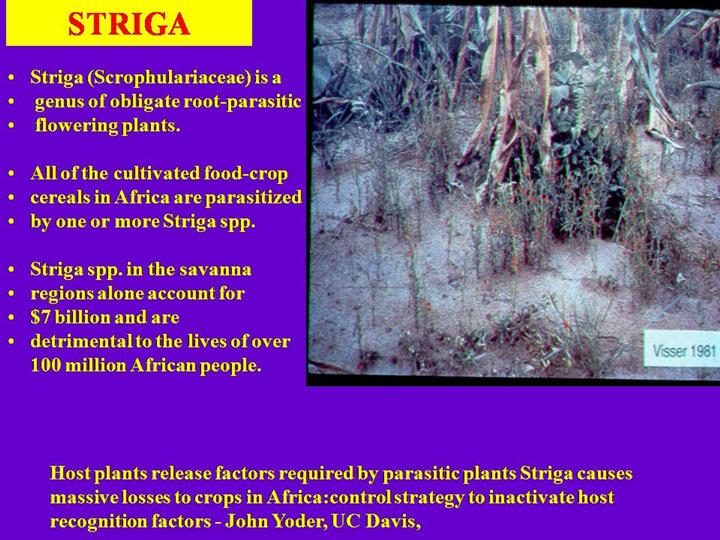| front |1 |2 |3 |4 |5 |6 |7 |8 |9 |10 |11 |12 |13 |14 |15 |16 |17 |18 |19 |20 |21 |22 |23 |24 |25 |26 |27 |28 |29 |30 |31 |32 |33 |34 |35 |36 |37 |38 |39 |40 |41 |42 |43 |44 |45 |46 |47 |48 |49 |50 |51 |52 |53 |54 |55|56 |57 |58 |59 |60 |61 |review |
 |
· Parasitic weeds: Striga gesnerioides is a major, if not the leading, biotic constraint of cowpea production. Yield losses in infested soils from 30-100%. S. gesnerioides is widely distributed in Africa from Morocco and Sudan to S. Africa and is the most common Striga species in Africa. Most impact in cowpea agriculture in the Sahelian and savanna zones of west and Central Africa from Senegal to Chad and to southern Togo and Benin. Important in Mali, Burkina Faso, Niger, Nigeria, and Cameroon. The problem has increased in importance over last decade. A close relative of Striga, Alectra, is also parasitic on cowpeas, particularly in East, Central and Southern Africa. Yield losses of 20% in Kenya, and 50% in groundnuts in Nigeria. We propose a two-fold approach to tackle this problem. Firstly, marker tags will be developed to facilitate marker-assisted selection in classical breeding. Secondly, a transgenic approach will also be pursued to reduce chemical stimulation of Striga by cowpea.
|